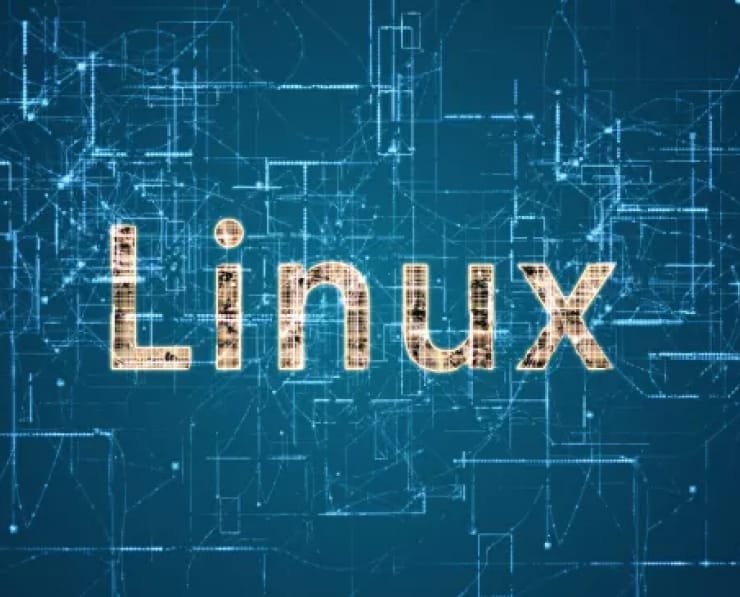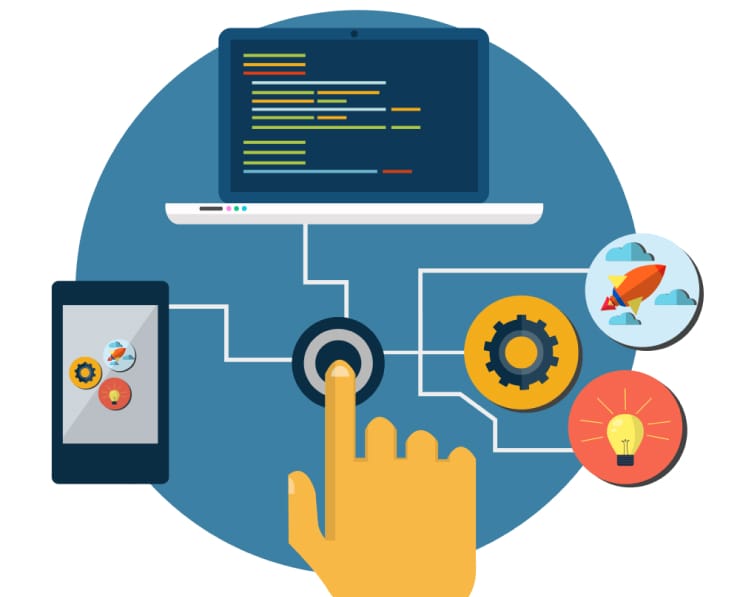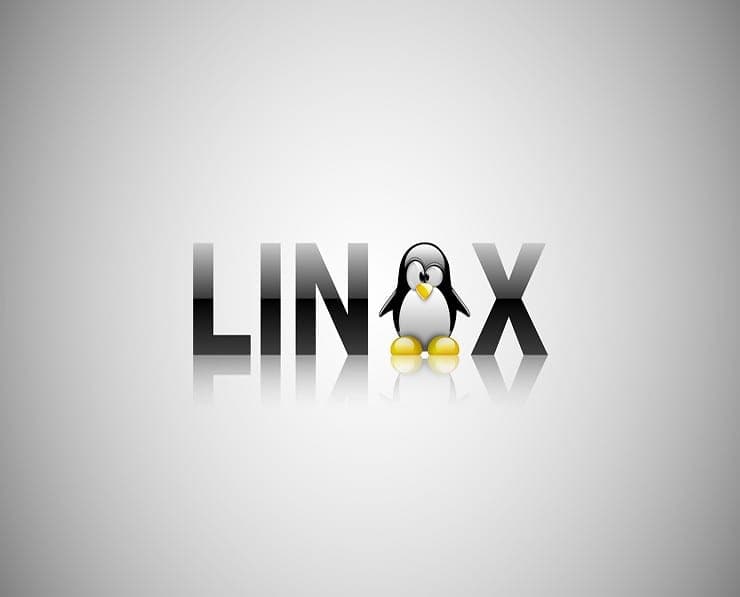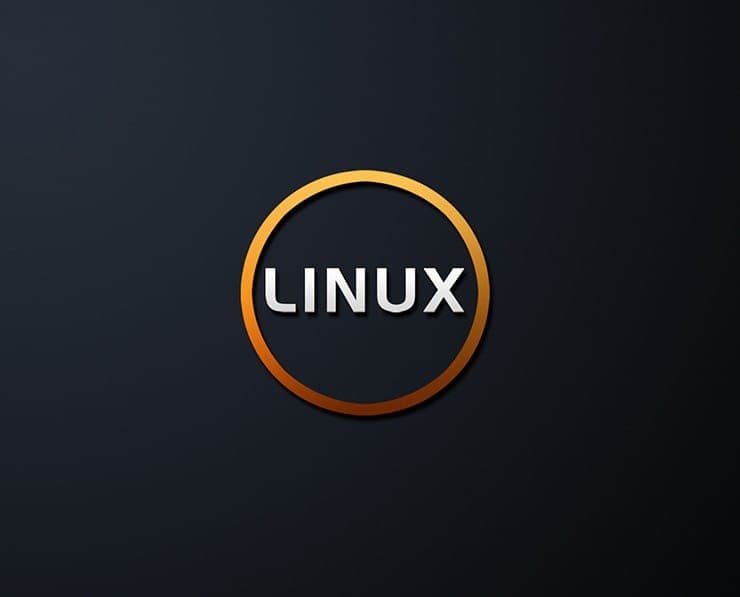Student Feedback
102-500: LPI Level 1 Certification Video Training Course Outline
Introduction
Preperation of practice
Introduction to the console
101.1 Determine and configure ha...
101.2 Boot the system
101.3 Change runlevels / boot ta...
102.1: Plan hard disk partitioning
102.2: Install a boot manager
102.3: Manage shared libraries
102.4: Use debian package manage...
102.5: Using RPM and YUM package...
102.6: Linux as guest virtualiza...
103.1: Working on the command line
103.2: Process text streams with...
103.3: Basic file management
103.4: Using streams, pipes and ...
103.5: Create, monitor and termi...
103.6: Change process execution ...
103.7: Searching text files with...
103.8: Basic editing of files
104.1: Create partitions and fil...
104.2: Ensuring the integrity of...
104.3: Controlling the mounting ...
104.5: Manage file access rights...
104.6: Creating and changing sym...
104.7: Find system files and put...
105.1: Customize and use the she...
105.2: Adapt or write simple scr...
106.1: Install and configure X11
106.2: Graphic desktops
106.3: Accessibility
107.1: Manage user and group acc...
107.2: Automate system administr...
107.3: Localization and Internat...
108.1: Manage the system time
108.2: System logging
108.3: Basics of Mail Transfer A...
108.4: Manage printers and print...
109.1: Basics of Internet Protocols
109.2: Persistent network config...
109.3: Basic Network Troubleshoo...
109.4: Configuring the client-si...
110.1: Perform security administ...
110.2: Securing a computer
110.3: Protecting data with encr...
Introduction
102-500: LPI Level 1 Certification Video Training Course Info
Master Linux Administration: LPIC-1 102-500 Certification Course
Complete Study and Practice Course for Certification Success
What you will learn from this course
• Explore advanced Linux system architecture and internal components, understanding how the operating system interacts with hardware and software for optimal performance
• Gain in-depth knowledge of system initialization processes, including boot loaders, runlevels, and modern init systems such as systemd
• Acquire proficiency in shell scripting for automating repetitive administrative tasks, creating efficient workflows, and customizing Linux environments
• Master advanced file system management techniques, including handling permissions, managing disk quotas, and implementing encryption for secure storage
• Configure and troubleshoot advanced network settings, including IPv6, routing, DNS configuration, and network interface management
• Set up and manage critical network services, such as web servers, email servers, FTP servers, and database services, ensuring reliability and security
• Implement advanced security measures, including access control lists (ACLs), SELinux policies, firewall configuration, and user authentication mechanisms
• Understand virtualization concepts and deploy virtual machines using KVM, managing resources effectively for enterprise environments
• Configure high availability solutions and failover mechanisms to ensure business continuity and system resilience
• Develop advanced troubleshooting skills to identify and resolve issues with hardware, system performance, and network connectivity
• Perform system tuning and optimization for improved efficiency, including memory management, process scheduling, and resource monitoring
Learning Objectives
The LPIC-1 Linux Administrator (102-500) course is designed to equip learners with a strong foundation in advanced Linux system administration. By the end of this course, participants will be able to:
• Understand the structure and components of Linux operating systems, including the kernel, shell, and user-space utilities
• Manage system initialization and boot processes, configure runlevels, and troubleshoot startup issues effectively
• Write and execute shell scripts for automating administrative tasks, managing users, and performing routine maintenance
• Handle file system operations, including creating partitions, formatting drives, implementing quotas, and applying encryption for sensitive data
• Configure and manage network interfaces, troubleshoot connectivity issues, and implement IPv6 and DNS solutions
• Deploy and administer essential network services, ensuring optimal performance and secure operation
• Apply robust security measures, including configuring SELinux, setting up access control lists, and implementing authentication policies
• Use virtualization technologies to manage virtual machines, allocate resources efficiently, and simulate enterprise environments
• Implement high availability and failover solutions, minimizing downtime and improving system reliability
• Diagnose and resolve system and network problems, optimizing performance and ensuring smooth operation of Linux systems
Target Audience
This course is intended for IT professionals and Linux administrators who are seeking to expand their knowledge and take their skills to the next level. The primary audience includes:
• Linux system administrators looking to advance their expertise and manage complex environments
• IT professionals preparing for the LPIC-1 102-500 certification exam
• Individuals who have completed the LPIC-1 Linux Administrator (101-500) course or possess equivalent experience
• Network and system engineers who want to enhance their knowledge of Linux networking, security, and virtualization
• Professionals aiming to gain practical, hands-on experience in managing enterprise Linux systems
The course is structured to provide a combination of theoretical knowledge and practical exercises, ensuring that participants gain both the understanding and the real-world skills required to succeed in advanced Linux administration roles.
Requirements
To fully benefit from this course, participants should have a solid foundation in Linux system administration and familiarity with basic command-line operations. The course assumes knowledge of Linux fundamentals, allowing learners to focus on advanced topics and techniques.
Participants should be comfortable with performing standard administrative tasks, such as managing users and groups, handling basic file operations, and navigating the Linux file system. A working understanding of Linux commands, file permissions, and package management is essential for following the course material and completing practical exercises effectively.
Prerequisites
The LPIC-1 Linux Administrator (102-500) course builds on prior experience and foundational knowledge in Linux. Prerequisites include:
• Completion of the LPIC-1 Linux Administrator (101-500) course or equivalent practical experience in Linux administration
• Familiarity with Linux command-line tools and utilities, including file manipulation, text editors, and process management
• Understanding of basic networking concepts, including IP addressing, routing, and network interfaces
• Knowledge of file system structures, basic permissions, and user management
• Experience with installing and configuring software packages on Linux distributions
Having these prerequisites ensures that participants can focus on the advanced concepts covered in the course, such as system optimization, security configuration, network service management, virtualization, and high availability solutions.
This course provides a structured approach to mastering Linux system administration at an advanced level. Participants will gain hands-on experience in managing enterprise-grade Linux environments, developing problem-solving skills, and acquiring the expertise needed for LPIC-1 certification success.
By progressing through the course, learners will become proficient in performing advanced Linux administrative tasks, configuring and securing network services, implementing automation with shell scripts, and optimizing system performance. These skills are essential for IT professionals seeking to take on higher-level Linux administration responsibilities or pursue career advancement in enterprise IT infrastructure management.
The LPIC-1 Linux Administrator (102-500) course emphasizes practical application, enabling participants to immediately apply their knowledge to real-world scenarios. This combination of theory and practice ensures that learners develop both competence and confidence in advanced Linux system administration, preparing them for the challenges of managing complex IT environments.
Course Modules / Sections
The LPIC-1 Linux Administrator (102-500) course is structured into carefully designed modules that cover all aspects of advanced Linux administration. Each section builds on foundational knowledge, progressively guiding participants through more complex topics and hands-on exercises.
The first module focuses on Linux system architecture and initialization processes. Participants will explore the Linux kernel, user space utilities, and system startup procedures. Detailed insights into boot loaders, runlevels, and init systems such as systemd provide learners with a deep understanding of how the operating system initializes and prepares the environment for user operations.
The second module emphasizes shell scripting and automation. Here, learners acquire practical skills in writing and executing scripts to automate repetitive administrative tasks, manage system processes, and customize environments. The module also covers advanced text processing tools, regular expressions, and job scheduling, enabling participants to streamline system management effectively.
The third module delves into file system management. Participants will learn to create, format, and mount file systems, manage partitions, implement disk quotas, and configure encryption for secure storage. This module also examines advanced permission settings and access control mechanisms, ensuring administrators can maintain a secure and organized file system.
Networking and network services are the focus of the fourth module. Participants will configure and troubleshoot network interfaces, manage routing tables, and implement DNS and IPv6 solutions. The module further explores the deployment and administration of essential network services, such as web servers, email servers, and FTP servers, with a strong emphasis on security, performance, and reliability.
The fifth module is dedicated to system security and access control. Learners will configure SELinux policies, set up access control lists, and implement authentication mechanisms to safeguard Linux environments. This module also covers firewall configuration and intrusion detection, ensuring participants can protect systems from unauthorized access and cyber threats.
Virtualization and high availability are addressed in the sixth module. Participants will gain hands-on experience with KVM virtualization, managing virtual machines, allocating resources efficiently, and simulating enterprise environments. Additionally, the module covers high availability solutions, failover configurations, and disaster recovery strategies, preparing learners to maintain system resilience in critical environments.
The final module focuses on troubleshooting, system optimization, and performance tuning. Participants will develop skills to identify and resolve hardware, system, and network issues, monitor system performance, and optimize resource usage. This module emphasizes proactive system management, ensuring administrators can maintain stable and high-performing Linux environments.
Key Topics Covered
The LPIC-1 Linux Administrator (102-500) course provides comprehensive coverage of advanced Linux topics. Key areas include:
• Linux system architecture, kernel modules, and the interaction between hardware and software components
• System initialization, boot loaders, runlevels, init systems, and systemd unit configuration
• Advanced shell scripting, including loops, conditional statements, functions, and automation of administrative tasks
• File system management, including partitioning, formatting, mounting, quotas, encryption, and advanced permission settings
• Network configuration, troubleshooting, IPv6 implementation, routing, and DNS management
• Deployment and administration of network services such as Apache, Nginx, Postfix, Dovecot, and FTP servers
• Security measures, including SELinux policies, access control lists, user authentication, firewall configuration, and intrusion detection
• Virtualization concepts, deployment of virtual machines using KVM, resource management, and performance optimization
• High availability solutions, load balancing, failover configurations, and disaster recovery planning
• System troubleshooting, hardware diagnostics, performance monitoring, and proactive system tuning
These topics are designed to provide participants with a thorough understanding of advanced Linux administration concepts. Learners will gain the knowledge and skills required to manage complex Linux environments, configure and secure network services, and maintain system reliability and performance.
Teaching Methodology
The teaching methodology of the LPIC-1 Linux Administrator (102-500) course is designed to ensure practical learning and real-world applicability. A combination of lectures, hands-on exercises, demonstrations, and guided practice is used to facilitate learning and skill acquisition.
Lectures provide theoretical knowledge, introducing participants to advanced Linux concepts and best practices. Concepts such as system architecture, initialization, networking, and security are explained in detail, ensuring learners understand both the “how” and the “why” of Linux administration.
Hands-on exercises form a core part of the methodology. Participants practice shell scripting, file system management, network configuration, and service deployment in controlled lab environments. These exercises reinforce learning and allow learners to apply theoretical concepts in practical scenarios.
Demonstrations by instructors show step-by-step procedures for performing advanced administrative tasks. These demonstrations highlight common issues, troubleshooting approaches, and optimization techniques, providing participants with practical insights that go beyond theoretical knowledge.
Guided practice encourages participants to solve real-world problems independently while receiving feedback and guidance from instructors. This approach builds confidence, critical thinking, and problem-solving abilities, preparing learners for both certification exams and professional responsibilities.
Additionally, case studies and scenario-based exercises simulate enterprise Linux environments. Participants work on tasks such as configuring high availability solutions, managing virtual machines, and implementing security policies, gaining experience in managing complex systems in realistic settings.
The methodology emphasizes continuous learning and assessment, encouraging participants to reflect on their progress, identify areas for improvement, and consolidate their skills. By combining theory, practical exercises, and real-world scenarios, the course ensures participants develop a comprehensive understanding of advanced Linux administration.
Assessment & Evaluation
Assessment and evaluation are integral components of the LPIC-1 Linux Administrator (102-500) course. A combination of quizzes, practical assignments, and performance-based evaluations ensures that participants demonstrate mastery of course objectives and practical skills.
Quizzes are conducted at the end of each module to evaluate participants’ understanding of key concepts. These quizzes cover topics such as system initialization, shell scripting, file system management, networking, and security. Immediate feedback allows learners to identify gaps in their knowledge and reinforce understanding.
Practical assignments provide hands-on opportunities to apply theoretical knowledge. Participants perform tasks such as configuring network services, implementing security policies, automating administrative tasks with shell scripts, and managing virtual machines. These assignments are designed to mirror real-world challenges, ensuring learners develop practical skills that are directly applicable in professional environments.
Performance-based evaluations assess participants’ ability to perform advanced Linux administrative tasks independently. Evaluations include scenarios that require problem-solving, troubleshooting, optimization, and security implementation. Participants are graded based on accuracy, efficiency, and adherence to best practices, providing a clear measure of their proficiency.
Continuous feedback is provided throughout the course to guide participants in improving their skills. Instructors monitor progress, offer corrective guidance, and provide recommendations for further practice. This ensures learners remain on track and achieve the competencies required for LPIC-1 certification success.
The course culminates in a comprehensive assessment that evaluates both theoretical knowledge and practical abilities. Participants demonstrate mastery of advanced Linux administration, including system management, network configuration, security implementation, virtualization, high availability, and performance optimization.
By integrating quizzes, practical assignments, performance evaluations, and continuous feedback, the assessment methodology ensures that participants gain confidence, competence, and readiness for both the LPIC-1 102-500 exam and professional Linux administration roles.
Benefits of the Course
The LPIC-1 Linux Administrator (102-500) course offers a wide range of benefits for IT professionals, system administrators, and anyone seeking advanced Linux expertise. By completing this course, participants gain practical skills, theoretical knowledge, and industry-recognized certification preparation that can significantly enhance career prospects.
One of the primary benefits is the mastery of advanced Linux system administration. Participants will learn to manage complex Linux environments, perform system troubleshooting, configure network services, and implement security measures effectively. This advanced skill set equips learners to handle enterprise-grade systems, manage resources efficiently, and optimize performance for business-critical applications.
The course also emphasizes practical, hands-on learning. Participants gain real-world experience through lab exercises, scenario-based assignments, and simulations of enterprise Linux environments. This practical approach ensures learners are well-prepared to handle the challenges of professional Linux administration, reducing the learning curve when applying skills on the job.
Another significant benefit is enhanced problem-solving and troubleshooting capabilities. Participants learn to diagnose and resolve hardware, system, and network issues, develop strategies for performance optimization, and implement preventative maintenance measures. These skills are critical for maintaining system reliability and ensuring smooth IT operations.
The course also provides preparation for the LPIC-1 102-500 certification exam, a widely recognized credential in the Linux administration industry. Earning this certification validates a participant’s advanced Linux skills and increases credibility among employers. Certified professionals are more competitive in the job market and have better prospects for promotions, higher salaries, and specialized roles in IT infrastructure management.
Participants will also benefit from improved knowledge of system security and compliance. The course covers access control, SELinux, firewall configuration, and secure deployment of network services, equipping learners to protect Linux systems against unauthorized access, cyber threats, and data breaches. These skills are increasingly valuable in enterprise and cloud environments where security is a critical priority.
Additionally, the course prepares participants for career growth in Linux administration, system engineering, cloud computing, and IT operations. Professionals who complete this training can take on responsibilities such as network service management, virtualization, high availability configuration, and enterprise system optimization. The combination of certification, practical skills, and advanced knowledge opens doors to leadership roles, senior system administrator positions, and consulting opportunities.
Course Duration
The LPIC-1 Linux Administrator (102-500) course is designed to provide in-depth training over a structured timeline, allowing participants to learn at a pace that ensures comprehension and skill mastery. The recommended duration for this course is approximately eight to ten weeks, depending on the learner’s familiarity with Linux fundamentals and prior administrative experience.
The course schedule is divided into modules, with each module requiring a combination of lectures, practical exercises, and assessments. Participants can dedicate around ten to twelve hours per week to study and hands-on practice to complete the course within the suggested timeframe. This schedule balances theoretical learning with practical application, ensuring that learners gain proficiency in both areas.
For those with prior experience in Linux administration, the course can be completed at a slightly faster pace. Learners can focus on the advanced modules, hands-on exercises, and assessment activities to accelerate preparation for the LPIC-1 102-500 certification exam. Conversely, participants new to advanced Linux topics may benefit from a more gradual pace, allowing additional time for practice, experimentation, and consolidation of knowledge.
The course duration also accommodates the completion of practical labs and scenario-based exercises, which are essential for mastering complex Linux administration tasks. By dedicating sufficient time to these exercises, participants develop confidence in deploying, managing, and securing Linux systems in real-world environments.
Overall, the course duration is optimized to ensure comprehensive coverage of advanced Linux topics, practical skill development, and readiness for the LPIC-1 102-500 certification. Participants who follow the recommended schedule will gain the knowledge, skills, and confidence necessary to excel in professional Linux administration roles.
Tools & Resources Required
To complete the LPIC-1 Linux Administrator (102-500) course, participants will need access to a set of essential tools, software, and learning resources. These tools facilitate hands-on practice, experimentation, and practical application of the advanced concepts covered in the course.
A key requirement is a Linux-based operating system environment. Participants can use popular distributions such as Ubuntu, CentOS, Debian, or Fedora, either installed on physical hardware or as virtual machines. Virtualized environments are recommended for safe experimentation, allowing learners to practice complex tasks without impacting production systems.
Virtualization software is another essential tool. Applications such as VirtualBox, VMware Workstation, or KVM enable participants to create and manage virtual machines, configure network settings, and simulate enterprise-level Linux environments. Virtualization also supports testing of high availability solutions, failover mechanisms, and security configurations in a controlled environment.
For shell scripting and command-line exercises, participants will need access to a terminal emulator or console. Tools like GNOME Terminal, Konsole, or the Linux command line interface itself provide a platform for executing scripts, managing processes, and performing administrative tasks. Familiarity with text editors such as Vim, Nano, or Emacs is also necessary for writing and editing scripts.
Network configuration and testing require tools such as ping, traceroute, netstat, ifconfig, ip, and other diagnostic utilities. These tools allow participants to analyze network performance, troubleshoot connectivity issues, and implement advanced network configurations, including routing, DNS, and IPv6.
Participants will also benefit from using monitoring and system management tools such as top, htop, vmstat, iostat, and systemd utilities. These resources enable administrators to track system performance, monitor resource usage, and identify bottlenecks, contributing to effective system optimization and troubleshooting.
Documentation and reference materials are important resources for successful learning. Participants should have access to official Linux manuals, LPIC-1 exam objectives, online tutorials, and relevant books covering advanced Linux administration. These resources provide guidance, clarification, and additional examples to support hands-on practice and theoretical understanding.
Security-focused tools and resources, including firewall configuration utilities (iptables, firewalld), SELinux management commands, and authentication modules, are necessary for implementing advanced security measures. Participants will use these tools to configure secure systems, enforce access controls, and protect Linux environments from unauthorized access.
By having access to these tools and resources, participants can fully engage in the LPIC-1 Linux Administrator (102-500) course, perform practical exercises effectively, and gain the skills required for professional Linux administration and certification success.
Career Opportunities
Completing the LPIC-1 Linux Administrator (102-500) course opens up a wide array of career opportunities for IT professionals, system administrators, and technology enthusiasts seeking to specialize in Linux administration. The course equips participants with advanced skills, hands-on experience, and certification readiness that are highly valued in the IT industry.
One of the primary career paths for certified LPIC-1 professionals is Linux system administration. Individuals in this role manage Linux servers, maintain system stability, and ensure that hardware and software resources are optimized for performance. Advanced knowledge gained from the 102-500 course enables administrators to handle complex tasks, such as configuring network services, implementing security policies, and performing system tuning and optimization.
Network administration is another area where LPIC-1 certification adds value. Participants develop the skills required to configure and troubleshoot network interfaces, implement routing protocols, manage DNS and IPv6 configurations, and maintain secure and reliable network services. This knowledge is essential for roles that involve managing enterprise networks, data centers, and cloud-based infrastructures.
Security-focused roles also benefit from the course. Professionals gain expertise in SELinux policies, access control lists, firewall configurations, and user authentication mechanisms. These skills are highly relevant for positions such as Linux security administrator, IT security analyst, or system security engineer, where safeguarding systems and sensitive data is a critical responsibility.
The LPIC-1 Linux Administrator (102-500) course also prepares participants for virtualization and cloud computing roles. By mastering KVM virtualization, high availability configurations, and failover mechanisms, learners can work as virtualization specialists, cloud engineers, or infrastructure consultants. These roles require managing virtualized environments, deploying virtual machines, and ensuring business continuity in enterprise systems.
System engineering and IT operations roles are further enhanced by the skills acquired in this course. Participants gain advanced troubleshooting capabilities, performance monitoring expertise, and the ability to optimize system resources. Careers in system engineering, IT support, DevOps, and enterprise IT management benefit from this expertise, allowing professionals to design, maintain, and scale Linux systems efficiently.
Additionally, LPIC-1 certification is recognized internationally, providing opportunities for professionals to work with global organizations or in cross-border IT projects. Employers value certified professionals for their proven knowledge and ability to handle complex Linux environments, making LPIC-1 certification a key differentiator in the competitive IT job market.
Freelance and consulting opportunities also increase for individuals completing this course. Professionals with advanced Linux skills can offer system administration, network configuration, security assessment, and virtualization services to clients across industries. This flexibility allows participants to explore independent career paths or supplement existing roles with specialized consulting work.
In addition to career growth and certification advantages, participants benefit from continuous professional development. The LPIC-1 102-500 course equips learners with a strong foundation for pursuing higher-level Linux certifications, such as LPIC-2 or LPIC-3, further expanding career prospects and expertise in enterprise Linux administration.
Conclusion
The LPIC-1 Linux Administrator (102-500) course is a comprehensive, advanced training program designed to elevate the skills and knowledge of IT professionals in Linux system administration. Building upon foundational Linux knowledge, this course provides in-depth coverage of advanced topics such as system architecture, initialization, shell scripting, file system management, networking, security, virtualization, high availability, and performance optimization.
Participants gain hands-on experience through practical exercises, scenario-based labs, and guided practice, ensuring that theoretical knowledge is reinforced with real-world application. The structured modules, key topics, and teaching methodology provide a clear learning path that prepares participants for professional responsibilities and the LPIC-1 certification exam.
The course emphasizes practical skills, problem-solving, and troubleshooting, equipping learners to handle complex Linux environments with confidence. By mastering advanced administrative tasks, network configurations, security measures, and system optimization, participants are prepared to contribute effectively to enterprise IT infrastructure, cloud deployments, and high-availability environments.
Completing this course also provides significant career benefits. Participants can pursue roles in Linux system administration, network administration, security management, virtualization, cloud engineering, and IT operations. Certified professionals are recognized for their expertise, increasing employability, salary potential, and opportunities for career advancement. The skills and knowledge gained in this course provide a strong foundation for future certifications and continued professional growth in the field of Linux administration.
This course is suitable for IT professionals, system administrators, and Linux enthusiasts seeking to expand their knowledge, enhance their skills, and achieve professional recognition in the industry. The LPIC-1 Linux Administrator (102-500) course offers a blend of theoretical instruction, practical exercises, and assessment, ensuring participants are well-prepared for both certification and real-world Linux administration challenges.
Enroll Today
The LPIC-1 Linux Administrator (102-500) course provides an exceptional opportunity for IT professionals, system administrators, and Linux enthusiasts to advance their Linux administration skills, enhance career prospects, and achieve a highly respected, industry-recognized certification. By enrolling today, participants take a significant step toward mastering advanced Linux system administration, gaining practical, hands-on experience, and preparing themselves for long-term professional success in enterprise environments.
This course offers a well-structured curriculum designed to guide learners from foundational concepts to advanced techniques. Participants will gain expertise in managing complex Linux systems, securing network services, configuring high availability and virtualization solutions, optimizing system performance, and implementing advanced troubleshooting strategies. The comprehensive nature of the course ensures that learners develop both theoretical understanding and practical competence, preparing them for the diverse challenges of real-world Linux administration.
Expert instructors lead the course, providing step-by-step guidance, practical demonstrations, and insights into best practices for Linux administration. Hands-on labs and scenario-based exercises allow participants to apply knowledge immediately, reinforcing learning and building confidence in performing advanced administrative tasks. This practical approach ensures that learners are not only prepared for the LPIC-1 certification exam but also equipped to handle enterprise-grade Linux systems effectively.
In addition to technical skills, the course helps participants develop problem-solving, critical thinking, and decision-making abilities essential for IT professionals. By completing tasks such as network service deployment, security configuration, virtualization management, and system optimization, learners gain the confidence to tackle complex challenges and implement solutions efficiently in professional settings.
The LPIC-1 Linux Administrator (102-500) course also prepares participants to join a growing global community of certified Linux professionals. Enrollment connects learners with peers, instructors, and industry experts, fostering networking, collaboration, and opportunities for professional growth. This community support adds significant value, providing ongoing resources, insights, and career guidance beyond the duration of the course.
Achieving LPIC-1 certification validates participants’ advanced Linux skills, increasing credibility with employers and enhancing career prospects. Certified professionals are well-positioned for roles such as Linux system administrator, network administrator, IT security analyst, virtualization specialist, and cloud infrastructure engineer. Organizations around the world recognize LPIC-1 as a benchmark for Linux expertise, making this certification a powerful differentiator in the competitive IT job market.
By enrolling today, participants take control of their career trajectory, positioning themselves for high-demand roles in IT infrastructure, enterprise system administration, cloud computing, and security management. The skills and knowledge gained through this course not only open doors to immediate job opportunities but also provide a strong foundation for pursuing higher-level certifications such as LPIC-2 and LPIC-3, further expanding professional potential.
The course also emphasizes practical, real-world scenarios that mirror enterprise environments, allowing participants to practice configuring servers, managing complex networks, securing data, and optimizing system performance. This hands-on approach ensures learners are fully prepared for the responsibilities and challenges of professional Linux administration.
Enroll today to start your journey toward becoming a certified LPIC-1 Linux Administrator. Gain the expertise to manage and secure Linux systems, implement advanced networking solutions, optimize system performance, and deploy high availability and virtualized environments. By completing this course, you position yourself as a highly skilled Linux professional capable of contributing effectively to enterprise IT operations, cloud deployments, and critical infrastructure management.
Take the next step toward professional growth, career advancement, and recognition in the IT industry by enrolling in the LPIC-1 Linux Administrator (102-500) course today. Transform your knowledge into practical skills, achieve industry-recognized certification, and secure your place in the global community of Linux experts driving innovation, efficiency, and security in enterprise environments.










